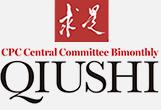The Historical Value of Yangtze River Culture
Throughout human history, civilizations have risen along waterways, where people tended to settle. The Yangtze River, extending over 6,300 kilometers, carves a path from west to east through several of China’s major geographical features, including the Qinghai-Xizang Plateau, the Hengduan Mountains, the Yunnan-Guizhou Plateau, the Sichuan Basin, and the middle and lower plains of the Yangtze.
The Yangtze River Basin features an intricate network of waterways, incorporating numerous tributaries, including the Minjiang, Tuojiang, Jialing, Hanjiang, Xiangjiang, Ganjiang, and Huangpu rivers. It also serves several important lakes, including the Dongting, Poyang, Chaohu, and Taihu lakes.
As China’s longest river and the world’s third longest, it weaves its way through the subtropics along the 30th parallel north, creating a vital golden waterway across East Asia’s three-tiered terrain. The Yangtze’s unique ecological and geographical resources, characterized by abundant water, warm climate, and convenient transportation, facilitated both irrigation and navigation in the region, undoubtedly providing favorable natural conditions for the emergence of civilization and the growth of local cultures.
The domestication of rice can be considered a revolutionary milestone in agricultural history as it provided humans with the stable and abundant food resources essential for survival.
The stability provided by the agricultural economy enabled these societies to pursue technological and cultural advancement and accumulation. One example of this is the Liangzhu Culture, which stands out for its plow-based rice cultivation, specialist craft industries exemplified by exquisite jade, pottery, and lacquerware, script-like carved symbols, large-scale construction projects, and a pyramid-shaped social structure. The Liangzhu Culture is an important testament to the diverse origins of Chinese civilization and holds irreplaceable significance in the development of both Chinese and world civilizations.
During the Spring and Autumn and Warring States periods (770–221 BC), iron farming tools and ox-drawn plows enabled the inhabitants of the Yangtze River Basin to better harness the water resources and favorable climate. This led to the emergence of the Ba-Shu, Jing-Chu, and Wu-Yue cultural regions along the upper, middle, and lower reaches of the Yangtze.
The Qin and Han dynasties (221 BC–AD 220) marked a period of common development for the cultural regions of the Yellow and Yangtze rivers, as cultures engaged in ongoing exchanges and enriched one another.
Following the Eastern and Western Han dynasties, China’s economic and cultural heartland gradually shifted southward from the Yellow River region to the more stable Yangtze region. As agricultural technology, customs, institutions, and labor arrived from the Central Plains, the Yangtze region began to develop rapidly.
The Ming and Qing dynasties (1368–1911) marked the zenith of the Yangtze River culture. In the lower Yangtze region, a distinct Jiangnan (referring to the region south of the Yangtze) cultural sphere emerged, centered around cities such as Nanjing, Hangzhou, and Suzhou. It encompassed a vast array of cultural achievements, ranging from education and imperial examinations to book publishing and collecting, from scholarship and handicrafts to garden architecture, and from calligraphy and painting to literary creation, opera, and religious practices. This cultural sphere not only represented a cultural pinnacle in ancient Chinese society, but also became a vital force for sparking China’s modern cultural transformation.
Reflecting on the 5,000-year history of the Chinese nation—from the origins of the first Chinese people and the dawn of Chinese civilization, through the growth of social productivity and the historical process of development, to the flourishing of thought and culture and the forging of our national spirit—each major event is closely tied to the nourishment and sustenance provided by the Yangtze River. The profound and sweeping history of the Yangtze River culture thus embodies the collective memory of the Chinese nation and the cultural DNA of Chinese civilization.
Editor: Yi Xiaowei
























